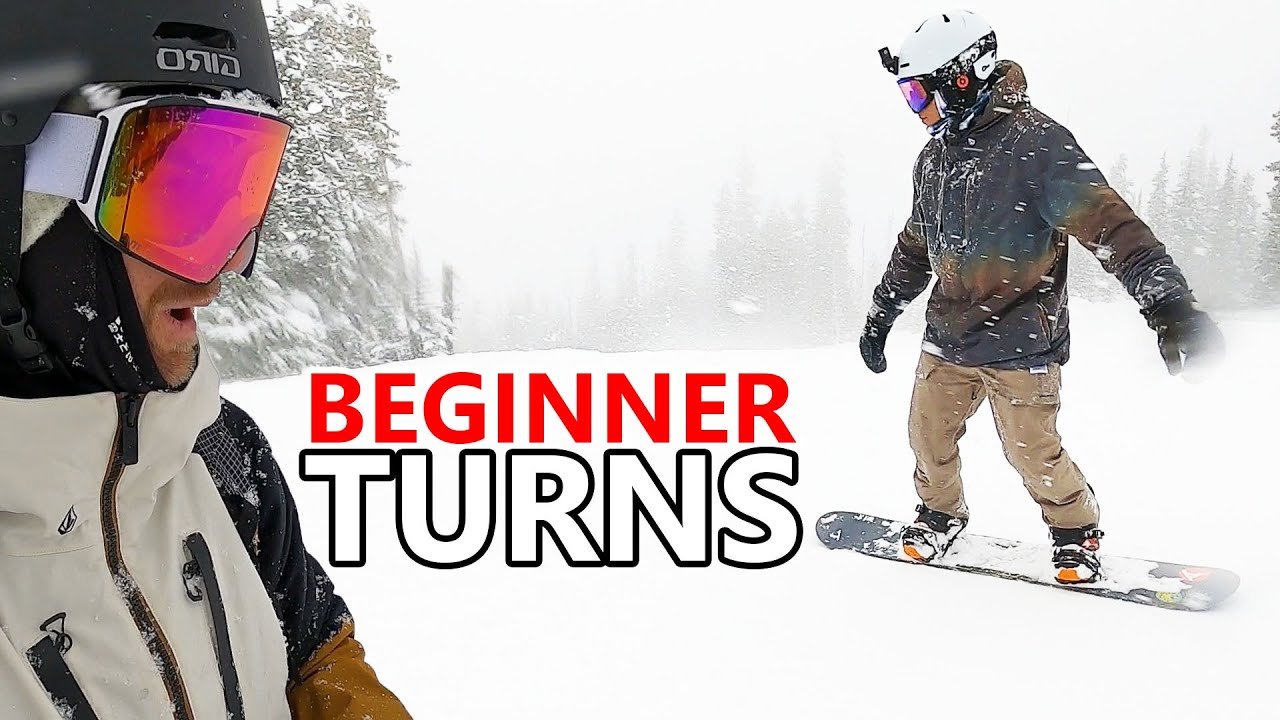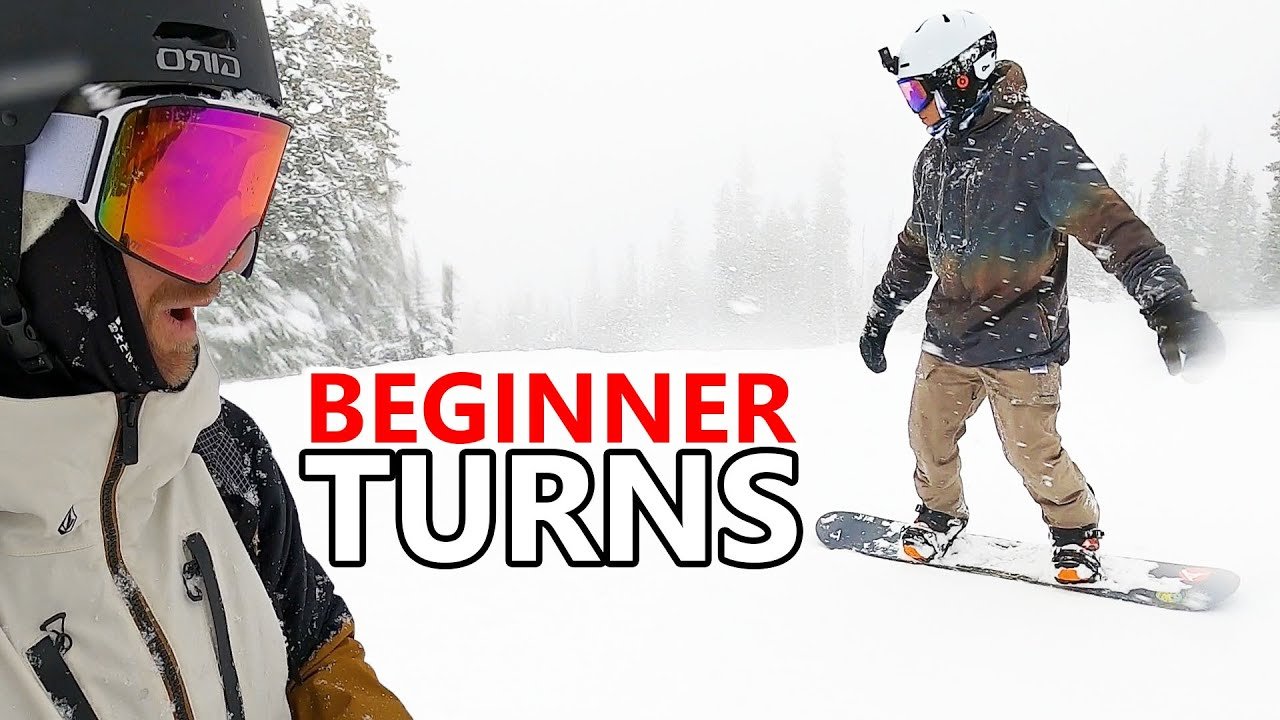
How to Progress Your Beginner Snowboard Turns
Hey everyone, in this video, SnowboardProCamp is sharing some valuable tips on progressing from beginner to intermediate snowboard turns. They emphasize the key differences between the two levels, particularly in how you spray snow during your turns. With beginner turns, you spray snow downhill, while in intermediate turns, you spray snow more to the side. By watching this video, you’ll gain insight into the techniques required to take your snowboarding skills to the next level. So, grab your gear and get ready to hit the slopes with greater confidence and fluidity in your turns!
In the video, SnowboardProCamp is joined by their friend Jose, who demonstrates the beginner turns before moving on to the intermediate ones. Jose highlights how the beginner turns feel comfortable and in control, allowing for easy speed control and confident stops. Meanwhile, the intermediate turns provide a smoother flow and rhythm, as the spray of snow happens earlier in the turn, leading to enhanced momentum downhill. If you’re looking to progress from beginner to intermediate snowboarding, this video is here to guide you along the way. So, watch, learn, and have a blast on the slopes!
Tips for Progressing from Beginner to Intermediate Snowboard Turns
Snowboarding is a thrilling sport that can be enjoyed by individuals of all skill levels. Whether you’re just starting out or have already mastered the basics, there are always ways to improve and progress your riding abilities. In this article, we will provide you with some tips to help you advance from beginner to intermediate snowboard turns. We will discuss the differences between beginner and intermediate turns, the importance of proper snow spray, the benefits of intermediate turns, finding the right run to practice, maintaining rhythm and flow, common questions and answers, and additional resources for progressing your riding. So let’s dive in and take your snowboarding skills to the next level!
Understanding the Differences Between Beginner and Intermediate Turns
Importance of Progression
Progression is a vital aspect of any sport, including snowboarding. As you gain more experience and confidence on the slopes, it is important to continually challenge yourself and push your limits. Progressing from beginner to intermediate turns not only allows you to improve your skills but also opens up new possibilities for exploring different terrain and riding styles.
Key Differences in Technique
The main difference between beginner and intermediate turns lies in how you spray snow with your board. In beginner turns, you spray snow downhill, while in intermediate turns, you spray snow more to the side. This shift in snow spray technique helps to maintain momentum and control while allowing for smoother and more fluid turns.
Developing Confidence and Control
Mastering the transition from beginner to intermediate turns requires gaining confidence and control on your snowboard. As you progress, you will become more comfortable with the movements and mechanics of turning, leading to a greater sense of control over your speed and direction. Developing these skills is crucial for tackling more challenging runs and enjoying a more dynamic riding experience.
Importance of Proper Snow Spray in Turns
How Snow Spray Affects Speed
The way you spray snow during turns plays a significant role in speed control. In beginner turns, spraying snow downhill helps to reduce speed and bring you to a stop. This technique is particularly useful when navigating steep slopes or crowded areas. Intermediate turns, on the other hand, involve spraying snow more to the side. This sideways spray helps to maintain momentum while still allowing for speed control, giving you the ability to flow more naturally down the hill.
Creating Stability and Balance
Proper snow spray technique also contributes to your stability and balance while turning. In beginner turns, spraying snow downhill adds stability by engaging all edges of your board and providing a solid base. This makes it easier to maintain balance and control throughout the turn. Intermediate turns with a sideways spray enhance stability by allowing your weight to shift smoothly from one side to the other, providing a more fluid movement and a balanced distribution of weight.
Enhancing Overall Performance
Mastering the technique of proper snow spray in turns can significantly enhance your overall performance on the slopes. Whether it’s gaining more control over your speed, improving your balance and stability, or refining your riding style, understanding and implementing the correct snow spray technique will undoubtedly elevate your snowboarding skills to the next level.
Beginner Turns: Spraying Snow Downhill
Demonstration of Beginner Turns
To better understand beginner turns, let’s take a closer look at a demonstration by our friend Jose. In beginner turns, Jose starts by letting his board go straight and then gets on his new edge to initiate the turn. As he completes the turn, you can see snow spraying downhill, indicating the proper snow spray technique for beginner turns.
Explanation of Technique
The technique for beginner turns involves spraying snow downhill. The position and movement of your body play a crucial role in executing this technique effectively. By shifting your weight, engaging your edges, and allowing the snow to spray downhill, you can effectively control your speed and navigate your turns with confidence.
Benefits and Comfort Level
One of the main benefits of beginner turns is the comfort and control they offer. Spraying snow downhill allows you to reduce your speed and come to a stop whenever necessary. This level of control gives you the confidence to explore different slopes and terrains without feeling overwhelmed or out of control.

Intermediate Turns: Spraying Snow to the Side
Demonstration of Intermediate Turns
Now, let’s move on to intermediate turns, which involve spraying snow more to the side. Jose will demonstrate intermediate turns to help us understand the technique involved. As Jose performs intermediate turns, pay attention to how he adjusts his snow spray timing to achieve the desired effect.
Adjusting Snow Spray Timing
In intermediate turns, the key difference lies in the timing of snow spray. Instead of spraying snow at the end of the turn like in beginner turns, you want to start spraying snow earlier in the turn. This sideways spray helps to maintain momentum and control while allowing for smooth transitions into the next turn. By adapting your snow spray timing, you can keep your speed in check while still enjoying a more fluid and natural ride.
Maintaining Momentum and Control
The sideways snow spray technique used in intermediate turns allows you to maintain momentum while still having control over your speed. The side spray helps to keep your riding flow going, making it easier to transition from one turn to the next. This increased fluidity and natural movement contribute to a more enjoyable and exhilarating riding experience.
Benefits of Intermediate Turns
Increased Fluidity and Natural Movement
One of the primary benefits of progressing to intermediate turns is the increased fluidity and natural movement they bring to your ride. As you become more comfortable and skilled with intermediate turns, you’ll notice that your transitions between turns become smoother and more effortless. This enhanced fluidity allows you to maintain a consistent riding rhythm and flow, boosting your overall snowboarding performance.
Improved Speed Control
Intermediate turns offer improved speed control compared to beginner turns. By spraying snow to the side, you can better regulate your speed and maintain a comfortable pace. This enhanced control gives you the freedom to enjoy different types of terrain while still feeling confident and in command of your movements.
Enhanced Riding Experience
Transitioning from beginner to intermediate turns opens up a whole new world of possibilities for your riding experience. As you master the techniques and gain confidence in your abilities, you’ll be able to explore more challenging runs, tackle steeper slopes, and venture into various riding styles. This newfound versatility and freedom will undoubtedly enhance your overall snowboarding experience.
Finding the Right Run to Practice Turns
Choosing a Suitable Terrain
When practicing turns, it is essential to choose a suitable terrain that matches your skill level. Look for runs that provide a mellow, gradual slope without excessive steepness. This type of terrain allows you to focus on perfecting your turn technique without feeling overwhelmed by speed or difficulty.
Avoiding Excessive Speed
While it can be tempting to seek out high-speed runs to test your skills, it’s important to avoid excessive speed when practicing turns. Maintaining a moderate speed allows you to have full control over your movements and the ability to apply proper technique. Going too fast can hinder your progress and make it harder to maintain balance and control.
Utilizing Beginner-Friendly Runs
If you’re still in the early stages of transitioning from beginner to intermediate turns, it can be beneficial to utilize beginner-friendly runs. These runs typically have a more forgiving slope and offer a less intimidating environment for practicing your turns. By gradually increasing the difficulty of the runs as you progress, you can build your skills and confidence at a comfortable pace.
Maintaining Rhythm and Flow in Intermediate Turns
Understanding the Importance of Rhythm
Maintaining a rhythm is crucial when executing intermediate turns. Establishing a consistent and smooth flow between turns not only enhances your riding experience but also contributes to better control and stability. The rhythm in your turns allows for seamless transitions and ensures that you maintain a steady pace down the hill.
Tips for Achieving Smooth Transitions
To achieve smooth transitions between turns, it is essential to synchronize your movements with the terrain. As you approach the transition point, focus on smoothly shifting your weight and engaging your edges. This fluid movement helps to maintain momentum and control while reducing any choppiness or awkwardness in your turns.
Building Confidence in Continuous Turns
As you progress from beginner to intermediate turns, it’s important to work on building confidence in executing continuous turns. Continuous turns involve smoothly linking one turn to the next without any pauses or hesitations. This fluidity not only improves your overall riding style but also allows you to maintain speed and momentum throughout your descent.
Common Questions and Answers
How Long Does It Take to Progress?
The time it takes to progress from beginner to intermediate turns varies from individual to individual. It depends on factors such as natural ability, frequency of practice, and the quality of instruction received. Some riders may progress quickly, while others may take more time. The key is to be patient, consistent, and focused on improving your technique.
What Are Some Common Mistakes to Avoid?
Some common mistakes to avoid when progressing from beginner to intermediate turns include relying too much on your back foot, not shifting your weight properly during turns, and not maintaining an athletic stance. It is crucial to seek proper instruction and practice with intention to avoid developing bad habits that can hinder your progress.
Is It Necessary to Take Lessons?
While it is possible to progress without formal lessons, taking lessons from a qualified instructor can greatly accelerate your learning curve. A professional instructor can provide personalized guidance, correct any technical errors, and offer valuable feedback and tips to improve your turns effectively.
How Can I Improve my Turning Speed?
Improving your turning speed requires a combination of technique, practice, and building strength and flexibility in your lower body. Focus on proper weight distribution, engaging your edges, and maintaining balance throughout your turns. Gradually increase your speed as you become more comfortable and confident in executing turns.
What is the Ideal Body Position for Turns?
The ideal body position for turns involves maintaining an athletic stance with your knees slightly bent, your weight centered over your board, and a relaxed upper body. This balanced position allows for greater control, stability, and responsiveness when initiating and completing turns.
Additional Resources for Progressing Your Riding
If you’re looking for more resources to help you progress your riding, there are plenty of snowboard tutorials and tips available. We recommend checking out the beginner snowboarding playlist available on SnowboardProCamp’s website or YouTube channel. These resources offer a wealth of information and guidance to support your journey from beginner to intermediate snowboard turns.
Conclusion
Progressing from beginner to intermediate snowboard turns is an exciting journey that allows you to expand your skills, challenge yourself, and enjoy a more dynamic riding experience. By understanding the differences between beginner and intermediate turns, focusing on proper snow spray technique, finding suitable terrain to practice, maintaining rhythm and flow, and utilizing additional resources, you can make significant strides in your snowboarding abilities. So, grab your board, hit the slopes, and embrace the thrill of progress as you take your snowboarding to new heights!
